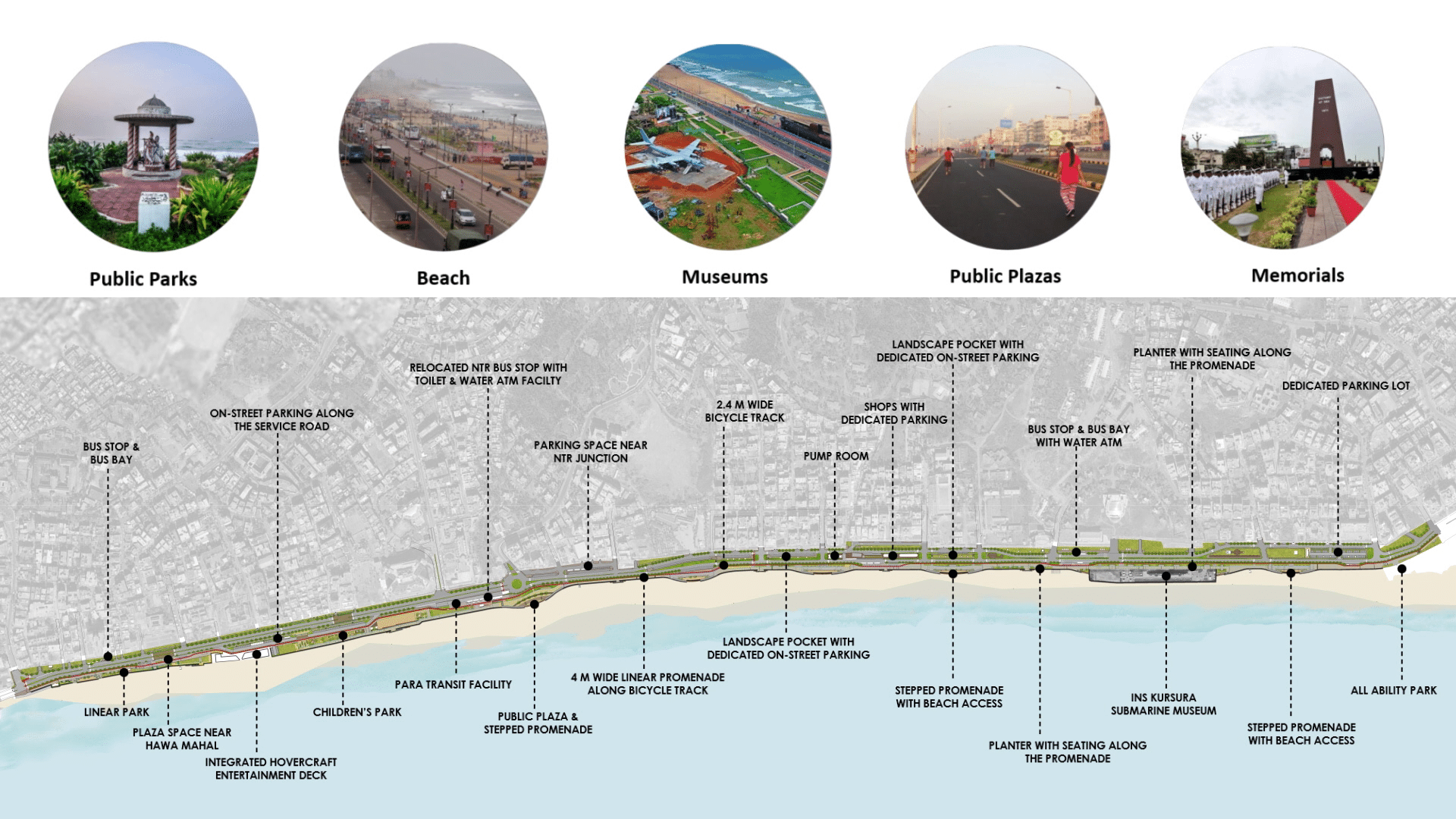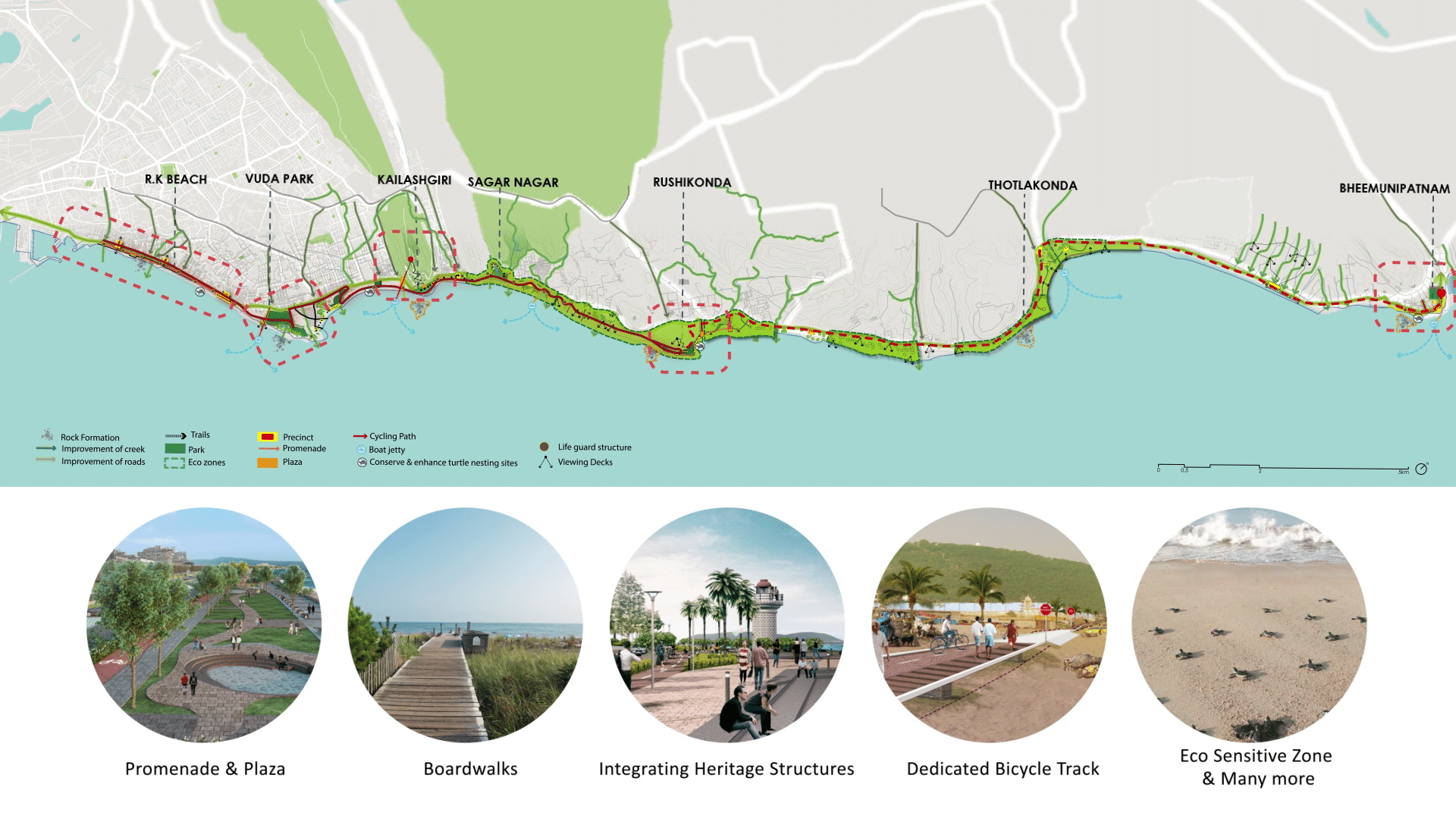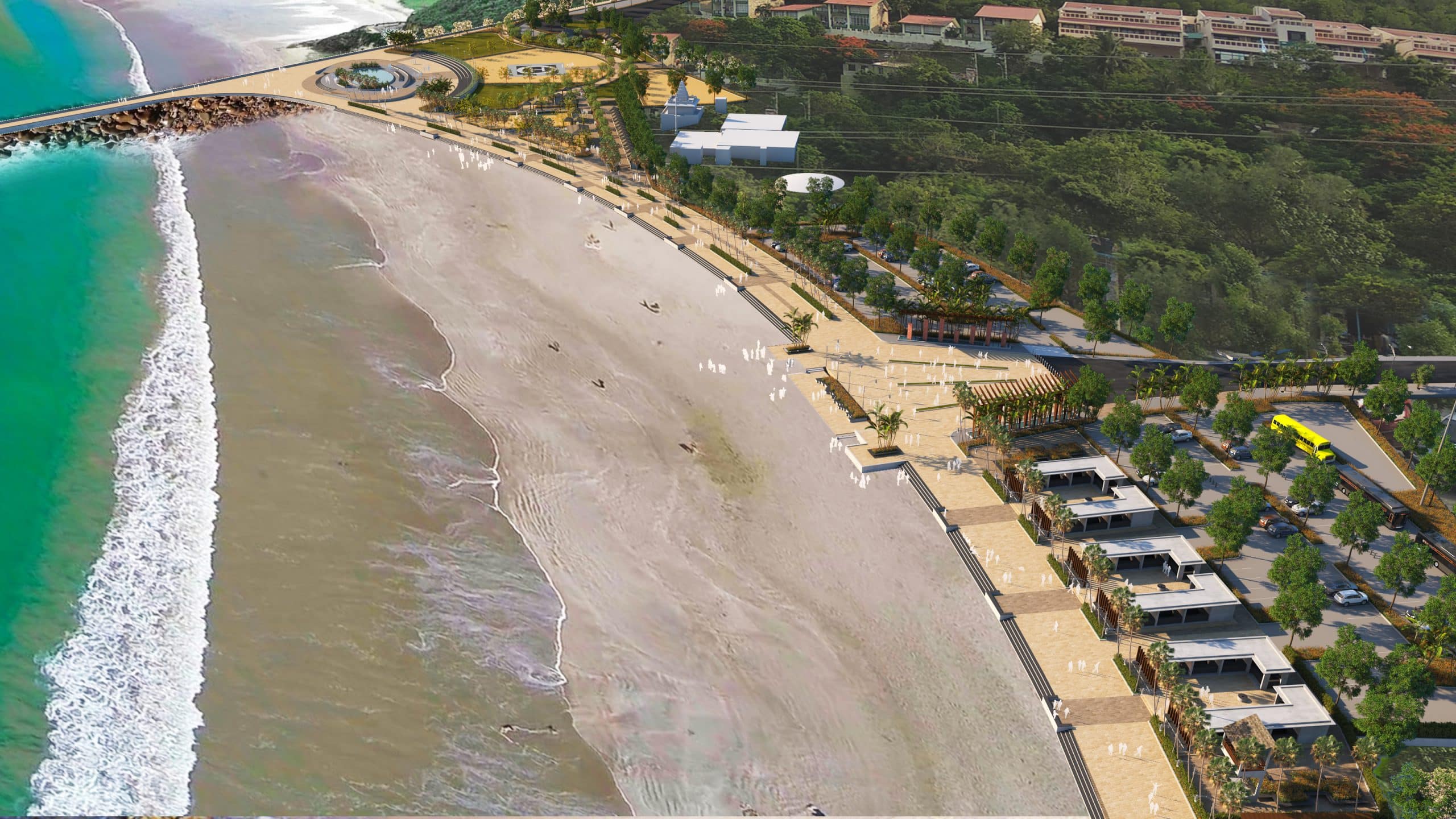
The Visakhapatnam Beachfront Development
UNDER ANDHRA PRADESH DISASTER RECOVERY PROJECT (APDRP) Visakhapatnam, Andhra Pradesh, India
The Visakhapatnam beachfront and city were devastated by Hud Hud Cyclone in 2014. As the city recovers, the vision is to redevelop the beach in a way that it ensures a development resilient to future hazards and redevelop and expand the recreational, social and economic benefits that the beachfront can offer. The project strives to achieve a beachfront master plan that offers Restoration; Redevelopment; Recreation. The design enables public engagement in form of recreational activities and planning, offers appropriate interventions that will mitigate the future risks from hazards and proposes an integrated beachfront redevelopment strategy.
Size : 26 Sq.KM (30 KM Length)
Services : Master planning, Urban Design, Physical assessment and site surveys, Beachfront Redevelopment, Landscape Design, Traffic Assessments, Transportation Planning, Stakeholder Consultations, Environmental Impact Assessment, Social Impact Assessment, Resettlement Action Plan, PMC, Infrastructure Engineering, Sustainability
Accolade :
• Excellence on the Waterfront Awards - 2021, Washington, DC
• Design Excellence Award (Unbuilt Category) at the ISOLA Awards - 2022
Share ►
Site Presentation and Challenges
The beachfront at Visakhapatnam presents a dynamic character from being dense urban, to public parks, eco-sensitive zones, tourist spots and fisher settlements as it traverses from south to north. However, the stretch is fragmented with sporadic and haphazard development in pockets. Further, there is a distinct physical disconnect between the existing beachfront promenade and the water edge due to the difference in levels between the retaining wall and the water. The masterplan is perceived as a solution to provide an integrated design that shall facilitate an active beachfront realm and enhance the resilience of the beachfront to future hazards.
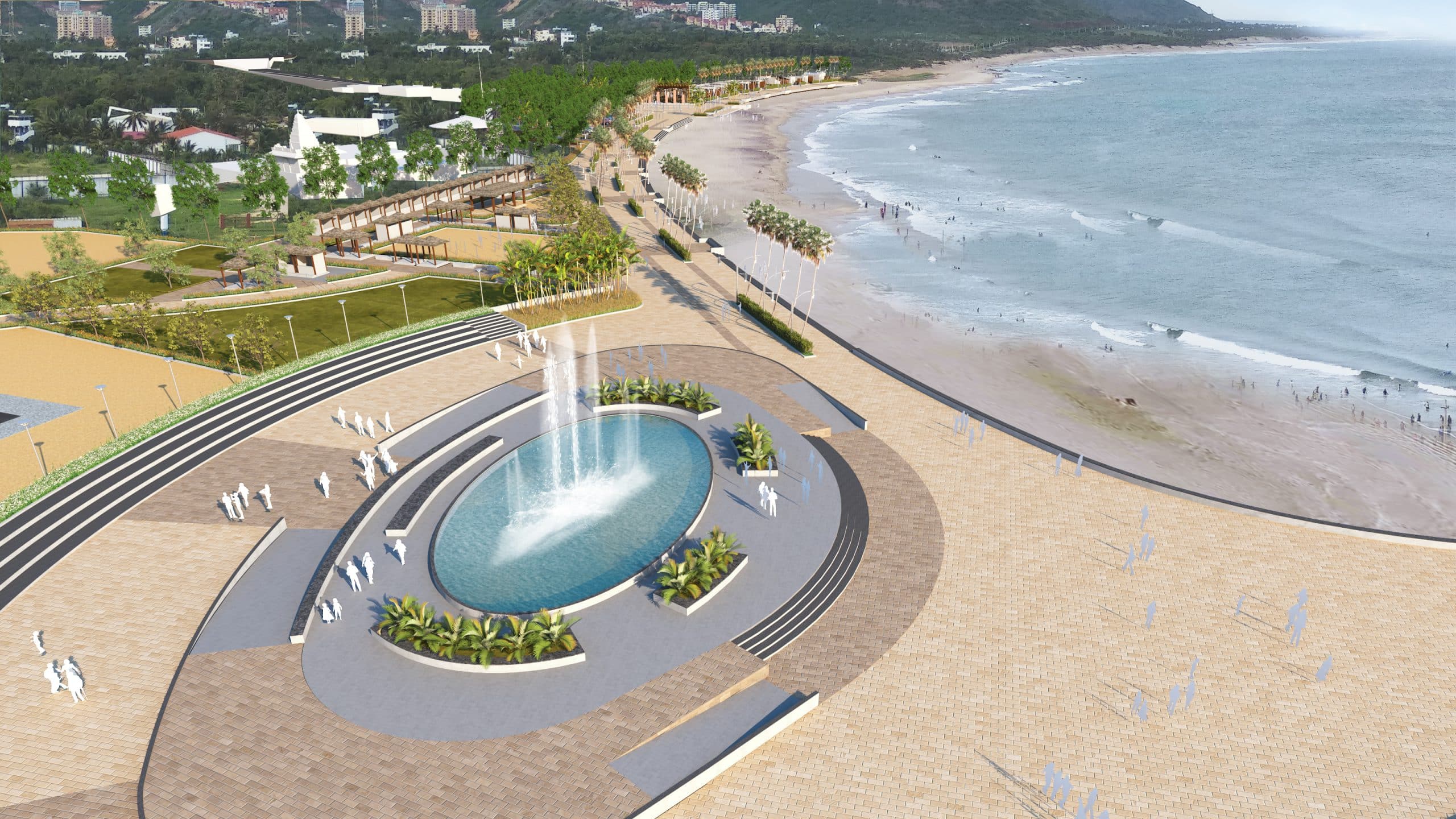
Design Strategies
The design process is guided by seven strategies that were developed based on a thorough site understanding, analysis of the interface between people and the place, and intense consultations with the key stakeholders. • Build and restore the existing natural assets to provide opportunities to appreciate, educate and showcase the importance of environmental and ecological potential. • Build upon and restore the man-made assets. • Enhancing the resilience and livelihoods of the coastal communities. • Build the infrastructure to enhance resilience along beachfront. • Strengthen physical and experiential interrelationship between various public places along the Beachfront. • Integrate and complement with the larger city network and other ongoing developments. • Develop new and complementary public spaces as per the potential and current /future needs
Design Features
The masterplan integrates the entire stretch through a set of elusive design solutions that enable connectivity and lend a uniform design language. These interventions include a continuous cycling track, retaining wall and introduction of uniform urban elements like signage, street furniture, and consistent construction material. Specific clusters have been identified for area based development that shall respond to the needs and potential of their immediate precinct and desired usage.



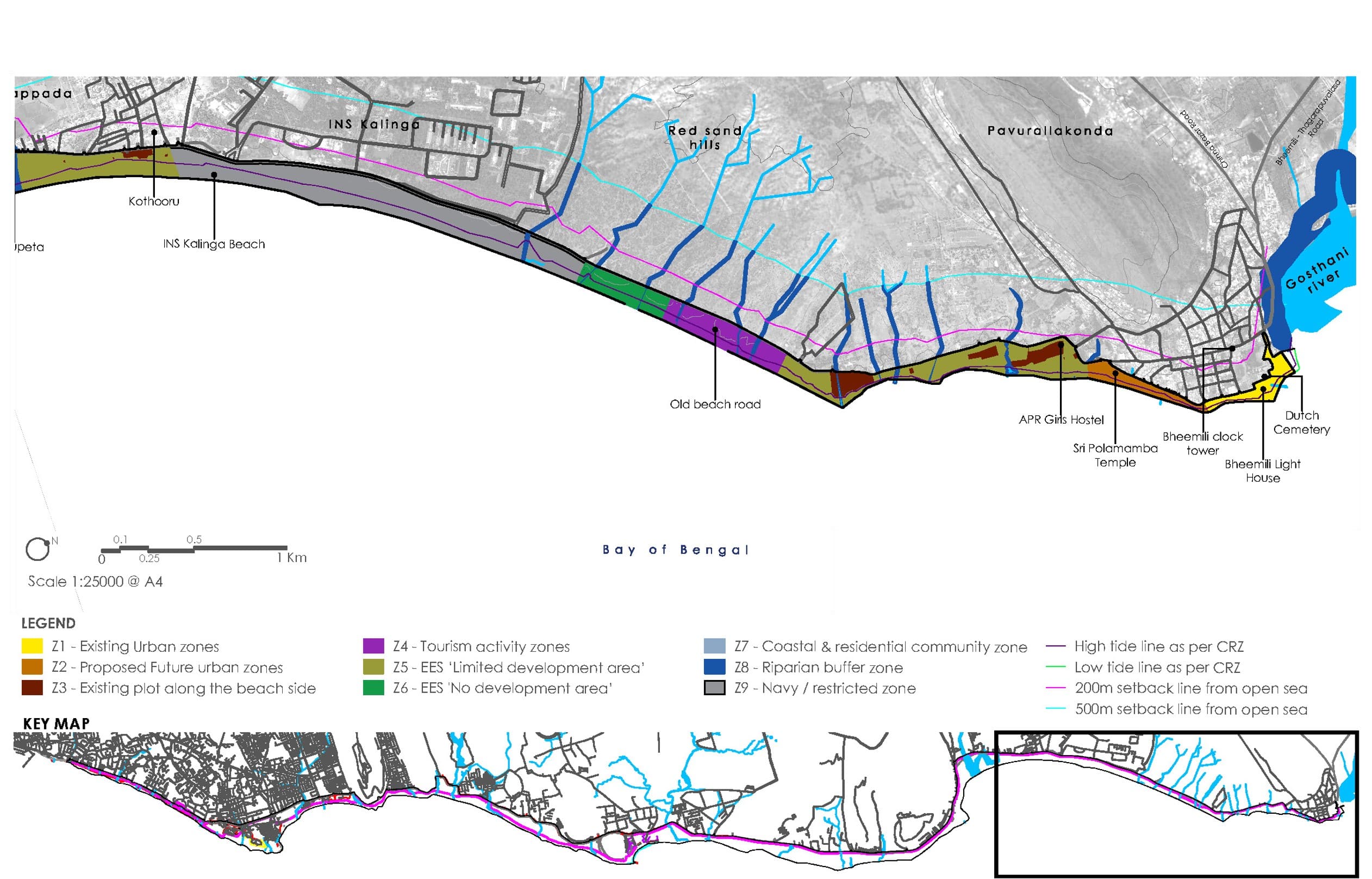


Restoration of retaining wall and designing it in a way that it facilitates an active water edge is one of the key interventions in the plan. The retaining wall doubles up as seating space with ample pause points, giving way in between to ramps and stepped access to the beach. Thus, enabling physical and visual interface along with a robust safety infrastructure from future storm surges. The design opens the promenade space towards the beach through stepped seating areas that mitigate the level difference between the promenade space and the water edge.
A continuous 14-km long cycling track along the beachfront is proposed with uniform signages, landscape and street furniture that shall bind the entire stretch together lending it a uniform identity while it traverses through varying precincts. A resilient landscape plan throughout the stretch pivoted on local species safeguards the beachfront from the future storm surges. Distinct pockets have been delineated for area-based developments.
The masterplan design presents a unique case of integrating multiple experiences that cross-over from densely urban to fisherman settlements to tourist spots and forested areas through a comprehensive manner that makes it an active public realm for a wide range of users while adding to the resilience of people, place and livelihoods.
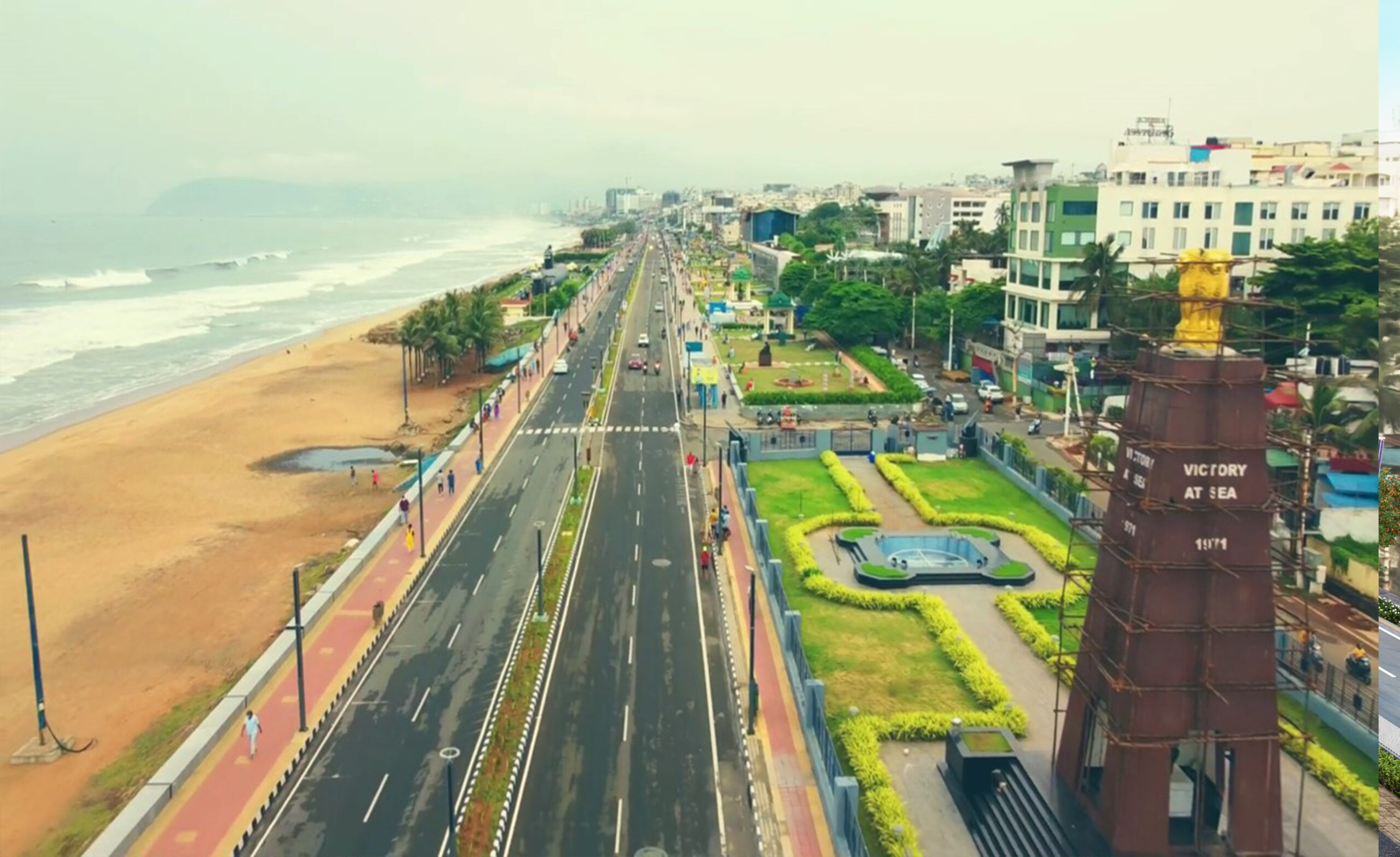
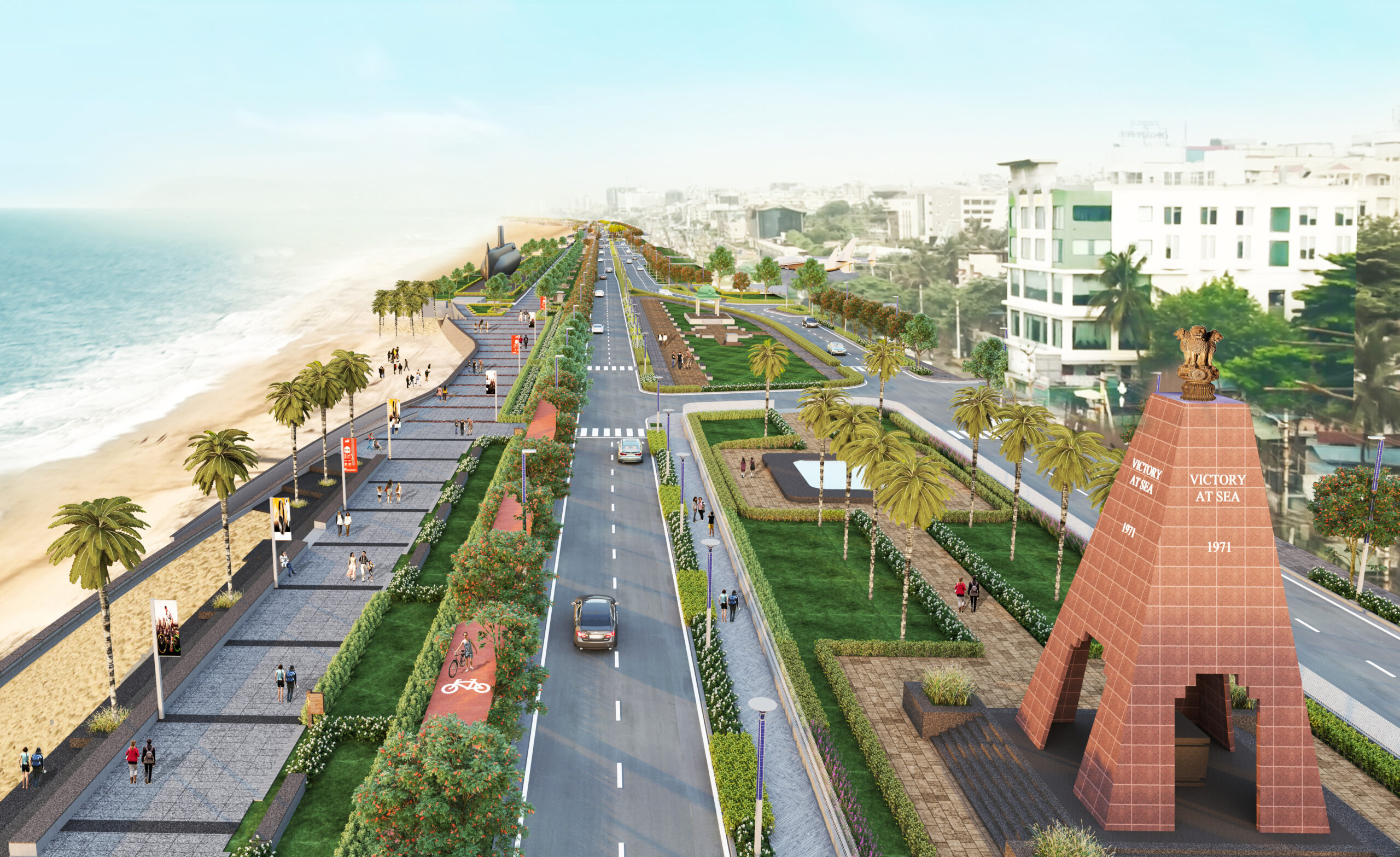
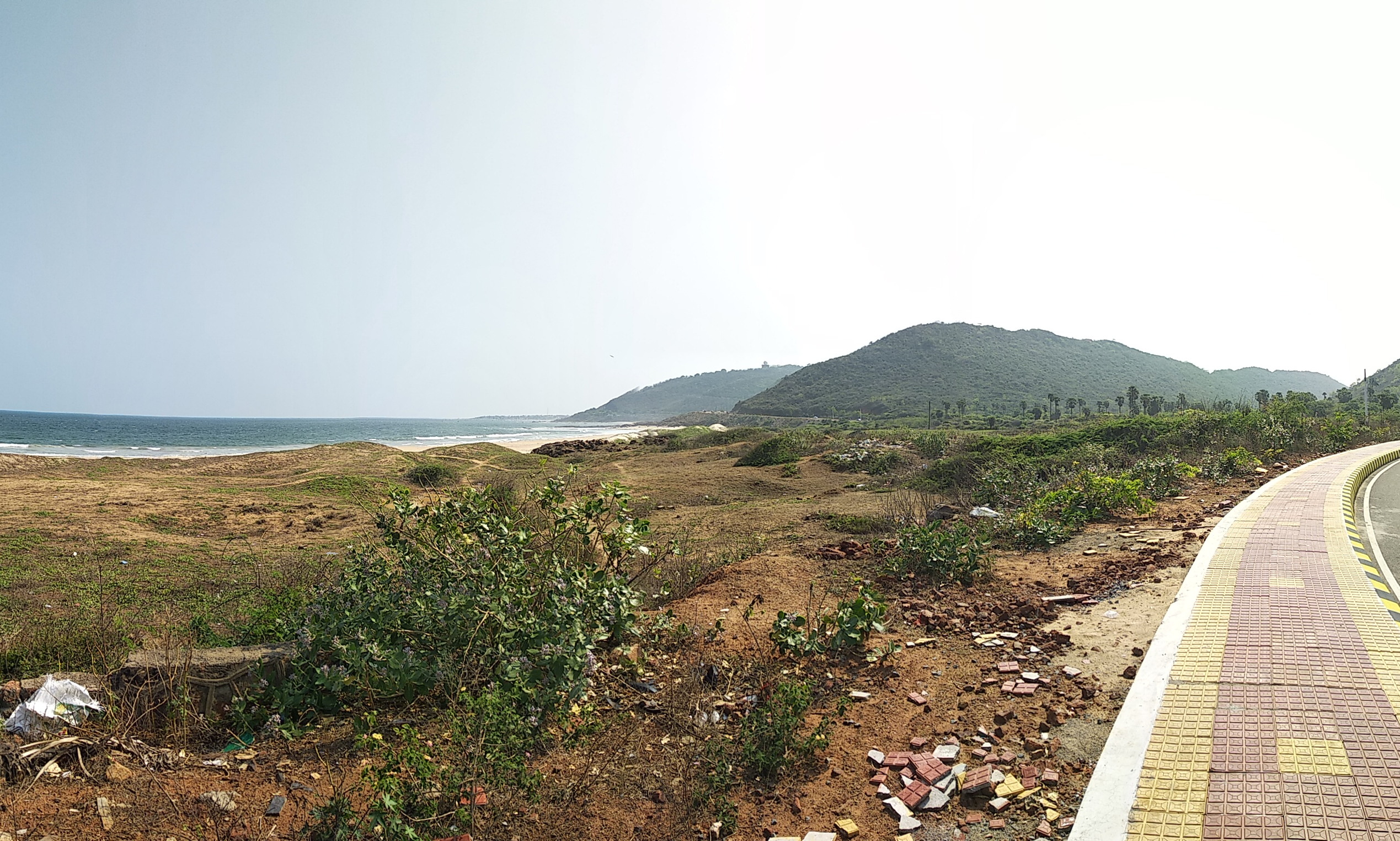
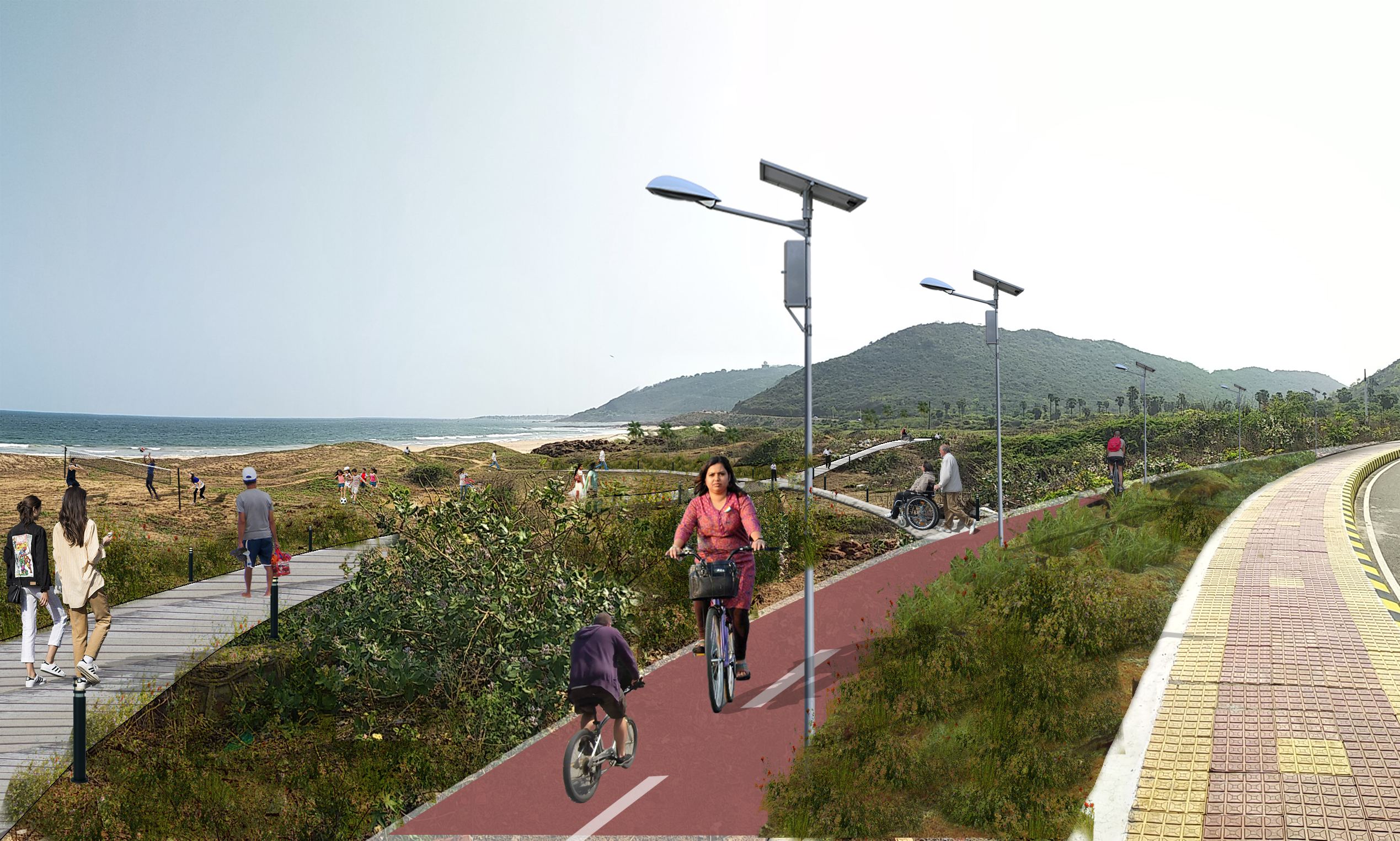
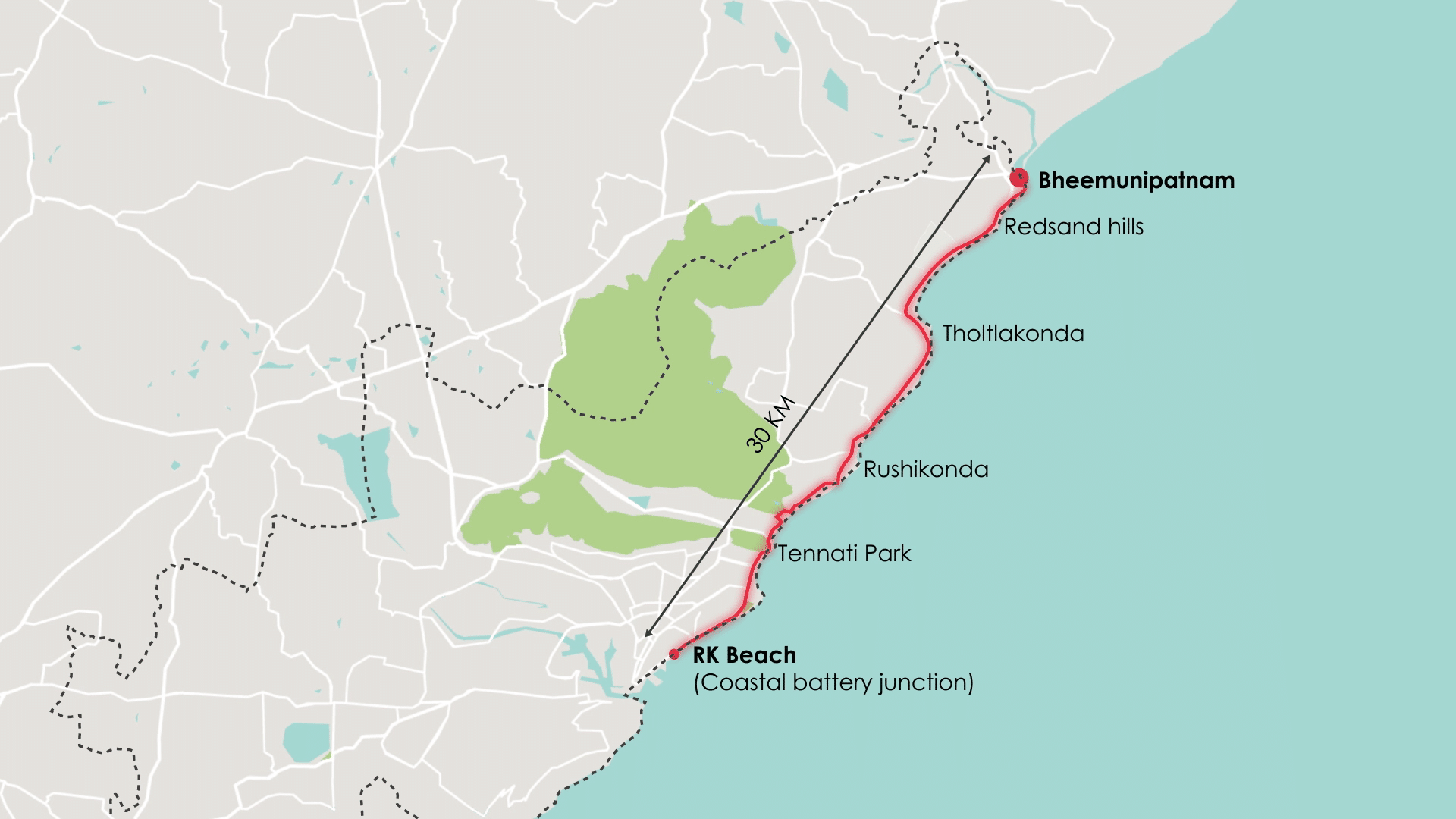
Sustainable Post-Cyclonic Beach Resurrection with Value-Added Benefits
Dealing with a shoreline ravaged by cyclone Hud-Hud in 2014 prompted the ‘Andhra Pradesh Disaster Recovery Project’ to call for the ‘Visakhapatnam Beach Front Redevelopment’ masterplan funded by a World Bank loan. The scope of this plan for a 30 km stretch of Visakhapatnam’s beach undertaken by INI involved rebuilding a resilient, non-eroding shore offering an active interface for citizens. It included sustainably restoring existing public spaces while creating vibrant new ones, preserving local biodiversity and traditional fishing communities, and establishing resilient intervention systems to combat future calamities.
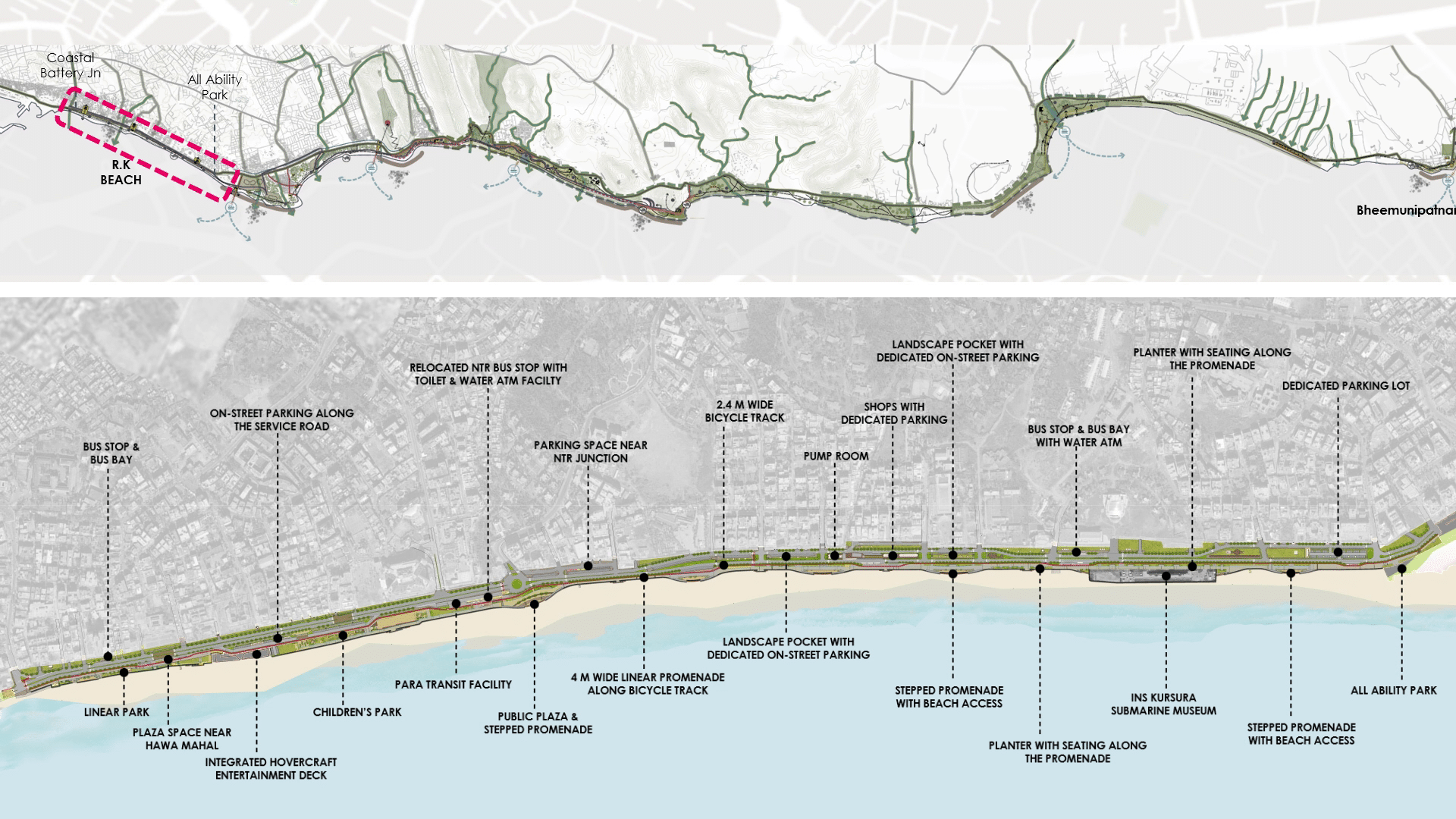
An Urban Fabric of Finely Interwoven Human, Environmental and Infrastructural Threads
Two major design features harmoniously integrate the vast linear stretch – restoration and reconstruction of the retaining wall together with public plazas, street furniture and steps leading down to the beach, and a well-defined cycling/ pedestrian track. Further, these get strategically integrated with the city road network, boosting the citizens’ interaction with their beach. Relevant interventions were made for specific needs of each of 9 distinctly characterized zones to infuse appropriate sustenance in them. Among them, local pockets of flora are enhanced to sustain inhabiting turtle colonies; boat parking facilities, drying platforms and markets were refurbished for local fishing communities; optimal street furniture and design ensure lively public plazas and parks. Vistas of unique natural features like the Red Sand Hills, precious forest and beach views, board walks and trails included in the design heighten citizens’ interaction with their environment.
